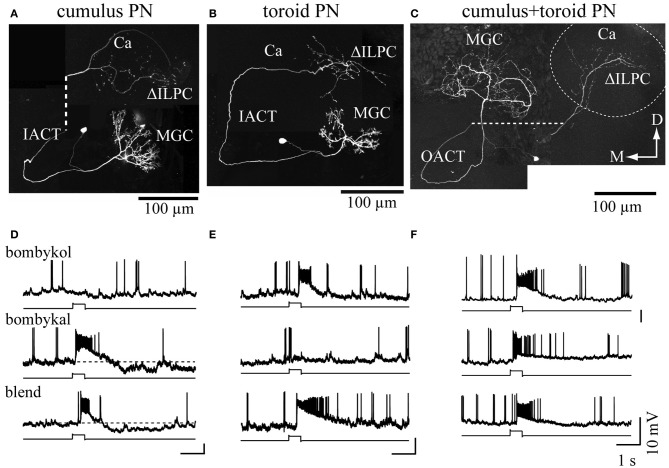Figure 4.
Combinatorial representation of pheromones in the macroglomerular complex in the antennal lobe. (A–C) The morphologies of projection neurons innervating the cumulus (A), toroid (B), and both subdivisions (C). The dashed line in (A) and (C) links processes that were separated to reveal the structures of branches that overlapped in situ. The dashed circle in (C) indicates the area of calyx of the mushroom body. (D–F). The physiology of the projection neurons innervating the macroglomerular complex. The response properties shown in (D–F) correspond to (A–C), respectively. Changes in the membrane potential in response to 200 ms odor presentation are shown. Bombykol, bombykal, and a combination of the two components were examined. Neurons innervating the toroid or cumulus showed selectivity in their odor-response properties, whereas multiglomerular neurons innervating both the toroid and cumulus responded to all stimuli. Ca, calyx of the mushroom body; D, dorsal; IACT, inner antennocerebral tract; M, medial; MGC, macroglomerular complex; OACT, outer antennocerebral tract; ΔILPC, delta area of the inferior lateral protocerebrum. (modified from Kanzaki et al., 2003).

